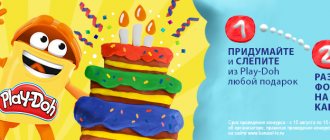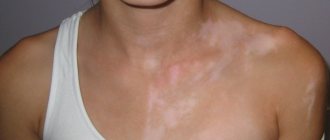Heatstroke
- a pathological condition of the body caused by general overheating of the body. Sunstroke is a type of heatstroke that occurs when direct sunlight hits a child's head.
There are predisposing factors for heatstroke: clothing that is too warm, not drinking enough fluids, and the child being overweight. Heatstroke can also occur indoors if it is hot and stuffy.
Walking in the sun with your head uncovered can lead to sunstroke. Initially, the child may experience agitation, facial flushing, headache, nausea, and vomiting. As the condition worsens, the body temperature rises, the skin becomes dry and hot, sweating stops, the heartbeat quickens, stupor occurs, and periodic loss of consciousness is possible. In severe situations, disturbances in the respiratory system (frequent and shallow breathing), nervous system (convulsions, hallucinations, delirium), etc. may be observed.
First aid for heatstroke:
- Check for signs of shock. If the child becomes dizzy, if he loses consciousness, and his skin becomes pale, cold and damp, if his breathing is shallow and rapid, and his pulse is weak and rapid.
- Remove baby from direct sunlight. Take or remove your child to a shaded or cool place. Lay him on his back with his legs slightly elevated. Unbutton or remove his clothes.
- If you suspect your child has heatstroke, call emergency services and begin to reduce the temperature by placing a cold compress on the head or a cold water bottle, dousing or wiping the body with cool water, turning on a fan, or fanning the child with a towel.
- If the child is not vomiting, give him water (the water can be salted) or juices every 10-15 minutes.
- When the body temperature drops to 39 ° C, dry the child, lay him down and cover with a dry sheet.
- Apply cool lotions to the forehead, as well as the subclavian, axillary, elbow, groin, and popliteal areas (where large vessels pass).
- Give plenty of fluids; you can add a little salt to the water.
- Fan your baby with a towel or place him near a fan or air conditioner. If your body temperature rises again, repeat one of the cooling procedures.
HEAT STROKE IN A CHILD - CAUSES, SYMPTOMS, TREATMENT AND PREVENTION
In such hot weather, it is important to avoid heatstroke in a child - sudden overheating of the body. Due to the fact that children's thermoregulation system is less developed than that of adults and their blood vessels do not react as quickly to temperature changes, children freeze faster in the cold and quickly overheat in the heat. Typically, parents fear hypothermia, while the number of children with frostbite in hospitals is negligible compared to those affected by the heat. It is important to understand that heatstroke can occur in a child even when the ambient temperature is quite suitable for an adult. Overheating is especially dangerous for newborns and children in the first months of life.
Causes of heatstroke:
- wrapping the child, as well as poor quality clothing (synthetic fabrics that do not allow air to pass through well and retain body evaporation);
- fluid deficiency, dehydration;
- overheating of the child due to being in a stuffy hot room or in the open hot sun;
- physical exercise, active games in the open sun (if these are not games in the water).
Symptoms of heat stroke:
- dry lips, dry armpits, hot and dry skin are a signal of dehydration;
- too ruddy, reddened skin;
- cold extremities;
- overexcitement of the child, capriciousness, loudness - may be a reaction of the nervous system to an increase in temperature;
- apathy, weakness, inactivity, desire to sleep - the next stage of the nervous system’s reaction to severe dehydration of the body, which enters the “energy saving” mode. This stage may be followed by the next one – loss of consciousness;
- dizziness, nausea, headache, vomiting, thirst;
- increase in body temperature to 38 degrees and above;
- In infants, dehydration is clearly visible by the absence of urination for 12 hours or more. Or by very rare urination with urine color ranging from dark yellow to light brown. Both are signs of very severe dehydration!
Heat stroke treatment:
- go to a cool, well-ventilated place (if there is no draft or breeze, create it yourself: with a newspaper, bag, book, whatever);
- undress the child and put him to rest;
- wipe your face and limbs with a damp towel or napkins;
- replenish moisture - drink often, in small sips (drinking too much liquid can cause vomiting). If possible, add a little soda and salt to the water (half a teaspoon per 0.5 liters of water) - this way it will be absorbed by the body faster. Or dilute Regidron powder (sold in pharmacies) in clean water and solder with the resulting solution;
- There is no need to give antipyretics - in this case they will be ineffective;
- If, with all of the above measures, the baby’s condition does not improve or worsens, vomiting appears, he turns pale or loses consciousness, immediately call an ambulance - it is likely that the cause of the child’s poor health is some other disease.
Preventing Heat Stroke:
- Always have a supply of drinking water with you for your child. The child’s condition is directly related to how long heatstroke lasts - intense, short-term overheating is not as dangerous as a prolonged lack of fluid. And it’s better if it’s regular drinking water, not sweet and not too warm. Older children can take mineral water with them;
- do not overwrap your child. It is better to take some spare clothes with you in case of bad weather, but do not put them on your child “just in case”;
- don't forget about your headdress. A light Panama hat with a wide brim is optimal, which will create additional shadow. And always from natural fabrics, as they are more hygroscopic;
- and do not hesitate to attract the attention of others, the driver, ask for help if required! After all, most often a child suffers from heatstroke not in direct sunlight, but in a stuffy room - a car, public transport, or a waiting room.
By remembering these simple rules, you can protect your child from heatstroke.
You can make an appointment or call a pediatrician at home by calling the Center in Moscow:
+7(495) 229-44-10, +7(495) 954-00-46
Previous
Next
Preliminary symptoms of heat stroke in children
The key word to note in the above explanation is “lasting.” Heatstroke is never sudden and is always the result of long hours in the sun. Therefore, heat stroke can be prevented.
All you need to do is to recognize in time the preliminary signs and symptoms of heatstroke in a child, namely:
- Heat Exhaustion - Dizziness: A feeling of weakness coupled with an inability to concentrate, perceive, or understand what is happening around you.
- Heat syncope caused by overexposure to heat
- Heat cramps – cramps caused by excessive water loss (due to exposure to harsh sun)
How to prevent sunstroke in a child
“Try not to be outside in the heat, from 10 am to 5 pm,” advises pediatrician Elina Abdujabarova. – At this time it is dangerous to play on the beach or walk under the scorching sun. In hot, sunny weather, children should not be outside without a hat for more than 30–60 minutes. This is enough time to get sunstroke.”
pixabay.com/
The baby's clothes should be light, made from natural, breathable fabrics. On your head you must wear a hat, Panama hat or a light cap. Offer your child water regularly when you walk outside in the summer or relax on the beach. And don’t forget about proper nutrition: fried, high-calorie, carbohydrate-rich foods help raise body temperature, while vegetables and fruits help the body’s thermoregulation.
Heatstroke in children: how to recognize and avoid? Sergey Butriy explains
Summer has arrived, and with it comes an increased risk of heatstroke. Pediatrician Sergei Butriy told how to distinguish heat exhaustion from a stroke and what to do if overheating does occur.
Our body spends a large amount of energy to maintain an acceptable temperature, writes the pediatrician. But in the heat, human mechanisms for lowering body temperature are exhausted and fail - in this case, the temperature begins to rise uncontrollably, and health and well-being deteriorate sharply.
“If this condition develops quickly (minutes to a couple of hours), heat stroke may occur, and if it develops slowly (hours to days), heat exhaustion may occur,” Sergei Butriy writes on his blog. Children are more susceptible to heatstroke and exhaustion than adults, so it's a good idea to be aware of the symptoms.
Symptoms of Heat Exhaustion in Children
Heat exhaustion is the first stage of heat illness and precedes heat stroke. Any child can become overheated to the point of exhaustion, but those at highest risk are those who are overweight or obese, have sunburn, are taking certain medications, and are currently ill.
Symptoms of heat exhaustion include:
- Increased body temperature (but usually less than 40 degrees Celsius);
- Cool, clammy skin despite the heat;
- Goose pimples;
- Fainting, dizziness or weakness with “light-headedness”;
- Headache;
- Unusually severe sweating;
- Increased thirst;
- Irritability, anger, aggression;
- Local muscle spasms and cramps;
- Nausea and/or vomiting.
If you notice these symptoms in a child, you need to try to lower the body temperature - otherwise the disease may develop into heatstroke.
How to Treat Heat Exhaustion
First, you need to take the child to a cool, shaded place and give him liquids containing salt (for example, sports drinks or Hydrovit, or Regidron Bio, or Humana Electrolyte).
Next, the pediatrician recommends wetting the child’s clothes with cold water and placing a wet, cool towel on the skin. If your child complains of painful muscle cramps, you can gently stretch and massage those muscles.
How do you know if it's heat illness and not a fever caused by an infection?
“The main difference is the COMPLETE lack of effect from antipyretic drugs,” writes Butriy. Antipyretics and non-steroidal anti-inflammatory drugs (such as paracetamol and ibuprofen) stimulate internal mechanisms of temperature reduction, which are completely exhausted by the time heat illness sets in: there is nothing left to stimulate.
Important: If your child cannot drink or seems to pass out, call your doctor or get emergency medical help!
Symptoms of Heat Stroke in Children
Heatstroke is the most severe form of heat illness and occurs when a child's body creates and stores more heat than it can release into the environment. In this case, the body temperature rises rapidly and without timely treatment leads to permanent brain damage or death.
Here are the symptoms of heatstroke:
- Body temperature rises to dangerous levels (more than 40–42 degrees Celsius);
- Lack of sweating;
- Confusion, disorientation;
- Red, hot and dry skin (sometimes the skin may feel moist);
- Loss of consciousness;
- Nausea, vomiting, diarrhea;
- Increased heart rate and breathing;
- Strong headache;
- Generalized cramps of all muscles;
- Weakness and/or dizziness.
Heatstroke is a medical emergency! Call an ambulance or take your child to the hospital emergency room, but first give him first aid.
First aid:
- Bring or bring the child into the house or into the shade, and undress him.
- Begin rapid cooling by immersing in a cold water bath.
- If a bath is not available, cover the child with towels soaked in cold water; change them often so that they do not have time to heat up.
Important: if the child does not drink on his own due to confusion or loss of consciousness, do not pour liquid into his mouth!
Heat stroke in infants
The heat exchange system in infants is imperfect. To avoid overheating, do not swaddle your baby if it is hot outside. Staying in a stuffy apartment can cause heatstroke in a baby - if, for example, the windows face the sunny side, and walking in a stroller covered (ironically!) with a sun diaper.
Active play outside in hot weather, traveling in a hot car, or staying in a parked car are also dangerous. All this can lead to a rapid increase in body temperature.
In hot weather, you need to monitor the baby for unusual behavior and indirect symptoms, which include:
- Tearfulness, bad mood, irritability;
- Rapid breathing;
- Lethargy (frightening lethargy, inability to wake up);
- Vomit.
Sergei Butriy writes that he is often asked whether it is possible to wash babies in a bathhouse. He is confident that it is possible - if only for a short time and if the bathhouse is not so hot that signs of heat exhaustion begin.
Heat stroke in athletes
Heat exhaustion is more common among athletes than stroke. However, a severe form of heat illness can also happen - and this, remember, is deadly!
Athletes are at highest risk when participating in intense sporting activities between noon and 6 p.m., the hottest part of the day. Ideally, you want your child to avoid training during these hours, but this is not always possible.
In this case, make sure that the young athlete drinks a lot often and takes adequate breaks between training in the heat (to have time to rest and avoid dehydration). Also, buy your children the right clothes for training in the heat: they should be light, not tight, and easily release moisture.
Two other risk factors for heat illness are having sickle cell disease or poor heat acclimatization. In these cases, talk to your trainers and make sure they have a plan for staying hydrated and are aware of what to do in an emergency.
How to prevent heat illness in children?
To avoid heat illness in children, make sure they drink enough fluids in hot weather: 70 to 100 milliliters per kilogram of body weight per day (for example, a 13-pound child needs to drink 900 to 1,300 milliliters of water per day).
In addition, it is worth shifting outdoor activities to the morning and evening, and wait out the peak of the heat in a cool place. If staying outside is unavoidable, seek shade.
In hot weather, it is better to avoid drinking coffee, carbonated drinks and alcohol - they all dehydrate the body. Finally, schedule frequent baths: your baby will easily lose excess heat in water and will be more willing to drink after bathing.
Previously, Sergei Butriy explained how heatstroke develops in children left unattended in a car. It turns out that fifteen minutes in a parked car can lead to a critical condition for a baby, even if the sky is overcast.
More reading on the topic:
If a child is bitten by a tick: a seasonal reminder from Sergei Butria
How to protect your child from danger during the summer holidays: LisaAlert's memo
Only a seat and no “triangles”: what you need to know about the safety of a child in a car
CHIPS news
Listen to our podcast
What is heatstroke?
Heatstroke is a condition in which prolonged exposure to harsh sun, especially on a summer afternoon, causes the body's temperature regulation system to fail.
Typically, the human body is capable of automatically adjusting its temperature in response to rising or falling temperatures outside. This is why we sweat in the summer (to cool the body) and eat more food in the winter (because digesting food creates heat in the body).
However, this natural "thermostatic" ability of the body has an upper limit when the body is unable to cope with a large range of external temperatures. This is why prolonged exposure to summer heat can cause the body's natural thermostat to go haywire, resulting in heatstroke in your baby.
A child has sunstroke - what to do?
“Call an ambulance urgently,” comments dermatologist Lusine Avagyan. “And without waiting for a doctor, provide first aid yourself.”
1. Move your child into the shade. It is necessary to cut off the factor that led to sunstroke and prevent further overheating. If possible, bring your child into a cool, air-conditioned room. If there is no one nearby, hide in the shade of trees.
2. Undress. It is important to ensure intense heat transfer from the body, and any clothing, even the thinnest, will interfere with this. Remove everything the baby is wearing and begin to cool him down.
3. Apply a cold compress. It is important to cool the tissues surrounding the brain, and to do this, apply cool compresses to the forehead. Ice is not needed, just moisten a handkerchief or towel with cool water. Every two to three minutes, wet the compress again, without allowing it to heat up. Continue applying the cool cloth to your head until doctors arrive.
4. Spray your child with water. This will help cool the body. The water should not be too cold, a safe temperature is 20-25 degrees.
5. Don't let your child move. If the baby tries to get up, then the condition is not critical, but this does not mean that the situation will not worsen. Ask him to lie still and not move while you apply compresses to his head. Any movement causes the body to produce heat, and the baby doesn’t need extra heat right now.
6. Monitor the condition. If the baby has lost consciousness or speaks incoherently, or cannot concentrate his eyes, lift his legs above his head, place a bag under them, a towel rolled up in several layers, or ask someone close to him to hold them on his lap. Blood flow from the legs to the head will provide nutrition to the brain cells and prevent oxygen starvation.
7. Drink water. When overheated, dehydration develops, the blood becomes thick and cannot circulate normally through the vessels. This aggravates the effects of oxygen starvation of brain cells and does not allow the body to efficiently transfer heat. Often, every five minutes, place a bottle of cool, still drinking water on your child's lips and ask him to take a couple of sips.
It is important to ensure a flow of fresh air to the baby. Do not let those around you stand nearby in a tight ring; ask everyone to step aside. Take a towel or magazine and fan your child with it.
pixabay.com/










